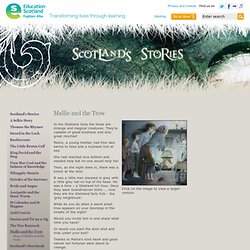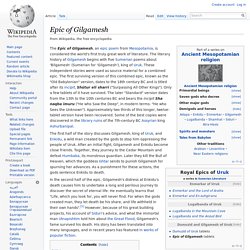

How to make a Geodesic dome / Geo dome / Bio dome. BridgeBuildingTips. Good Structures for Balsa Wood Towers. Balsa wood is only the third lightest wood in the world, but it is strong.

Engineering students build balsa wood towers (or bass wood towers) to learn how to build strong structures. It is an excellent exercise, and students learn a lot doing it. Many designs are readily available, but designing and building your own towers is how you learn. There are two basic types of balsa wood tower structures: three-legged towers and four-legged towers. Four-Legged Towers Balsa wood towers with four legs are easier to build, but they are not usually as structurally sound as their three-legged counterparts. Three-Legged Towers Three-legged towers are harder to build because the angles are more difficult, but they tend to be stronger towers. Wood Grain. Mallie and the Trow - Scotland's Stories. In the Shetland Isles the trows are strange and magical creatures.

They’re capable of great kindness and also great mischief. Mallie, a young mother, had four wee bairns to feed and a husband lost at sea. She had reached rock bottom and needed help but no-one would help her. Then, as the night drew in, there was a knock at the door. It was a little man dressed in grey with a little grey hat on top of his head. What do you do when a weird small trow appears on your doorstep in the middle of the night? Would you invite him in and share what little you have? Or would you slam the door shut and hide under your bed?
Thanks to Mallie’s kind heart and good nature her fortunes were about to change. Click on the image to view a larger version. Epic of Gilgamesh. The Epic of Gilgamesh, an epic poem from Mesopotamia, is considered the world's first truly great work of literature.

The literary history of Gilgamesh begins with five Sumerian poems about 'Bilgamesh' (Sumerian for 'Gilgamesh'), king of Uruk. These independent stories were used as source material for a combined epic. The first surviving version of this combined epic, known as the "Old Babylonian" version, dates to the 18th century BC and is titled after its incipit, Shūtur eli sharrī ("Surpassing All Other Kings"). Only a few tablets of it have survived. The later "Standard" version dates from the 13th to the 10th centuries BC and bears the incipit Sha naqba īmuru ("He who Saw the Deep", in modern terms: "He who Sees the Unknown"). The first half of the story discusses Gilgamesh, king of Uruk, and Enkidu, a wild man created by the gods to stop him oppressing the people of Uruk.
History[edit] Versions of the epic[edit] Standard Akkadian version[edit] (Based on Andrew George's translation) Epic of Gilgamesh. Celtic Fairy Tales - Irish Stories, Printable Short Stories for Kids - Celebrating St. Patrick's Day. Irish Fairy Tales Index. Irish Fairy Tales: Mongan's Frenzy. Sacred Texts Sagas and Legends Celtic Index Previous The abbot of the Monastery of Moville sent word to the story-tellers of Ireland that when they were in his neighbourhood they should call at the monastery, for he wished to collect and write down the stories which were in danger of being forgotten.

"These things also must he told," said he. In particular he wished to gather tales which told of the deeds that had been done before the Gospel came to Ireland. "For," said he, "there are very good tales among those ones, and it would be a pity if the people who come after us should be ignorant of what happened long ago, and of the deeds of their fathers. " So, whenever a story-teller chanced in that neighbourhood he was directed to the monastery, and there he received a welcome and his fill of all that is good for man. The abbot's manuscript boxes began to fill up, and he used to regard that growing store with pride and joy. The abbot's eyes glistened when he heard that. Said Cairide': "Amen!
"